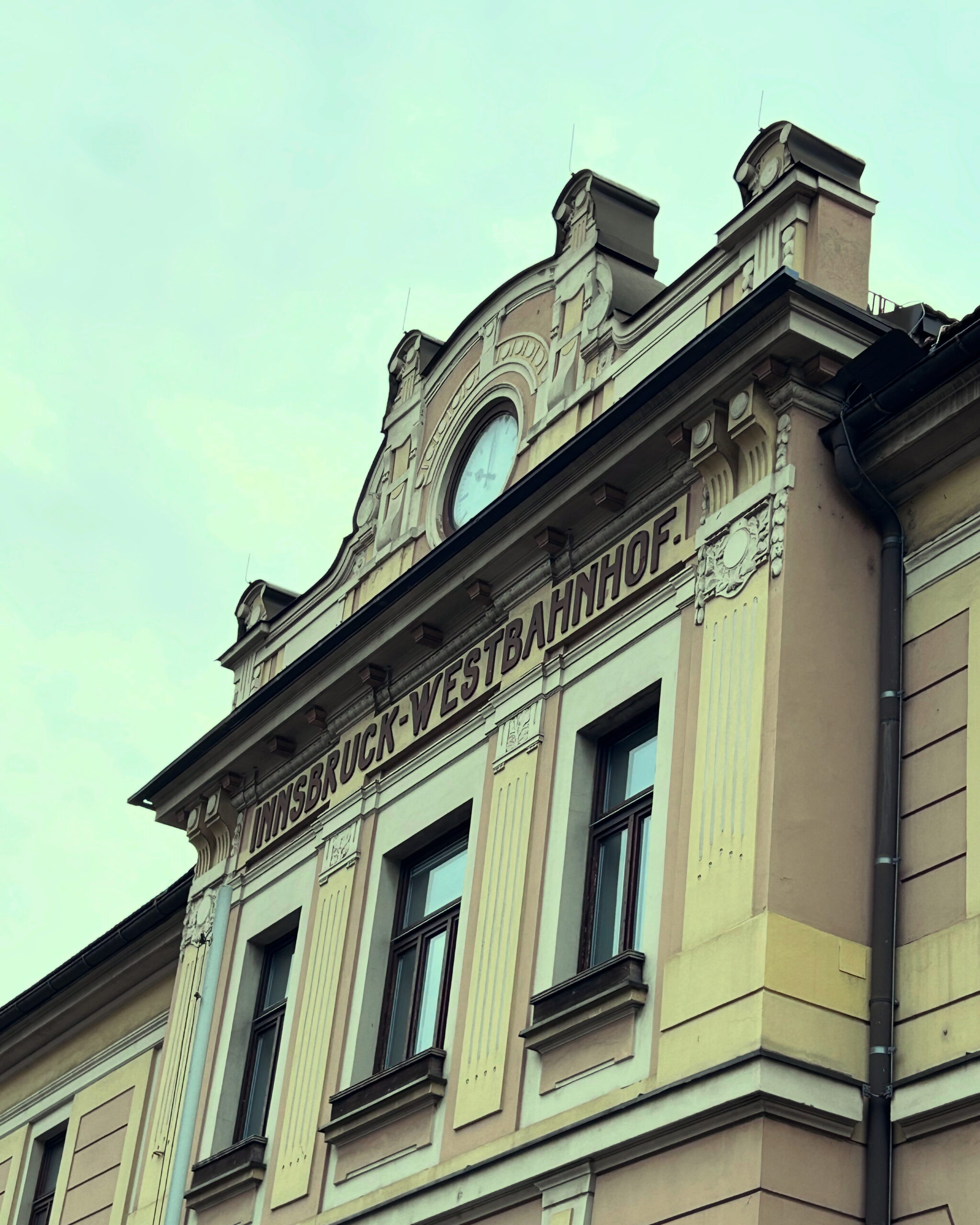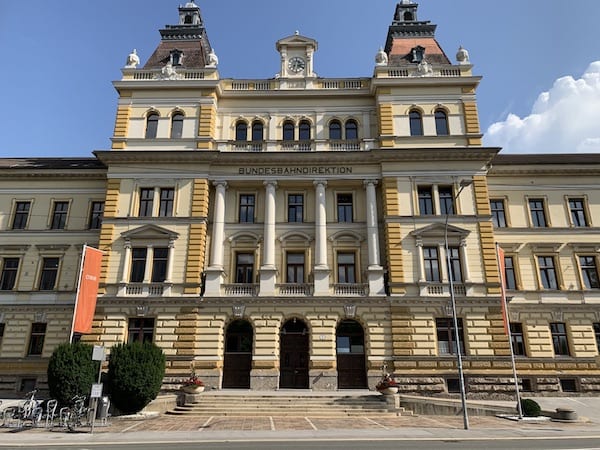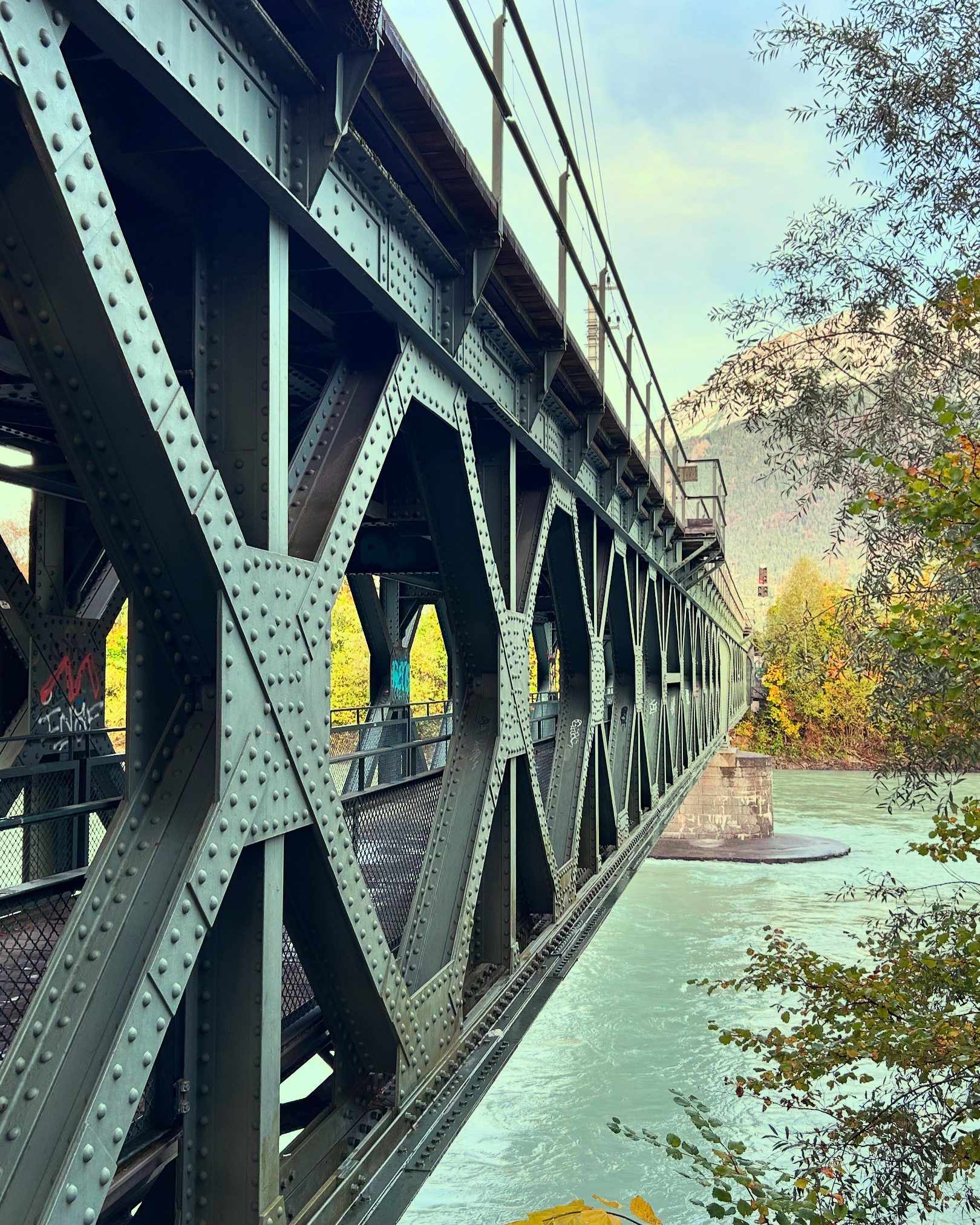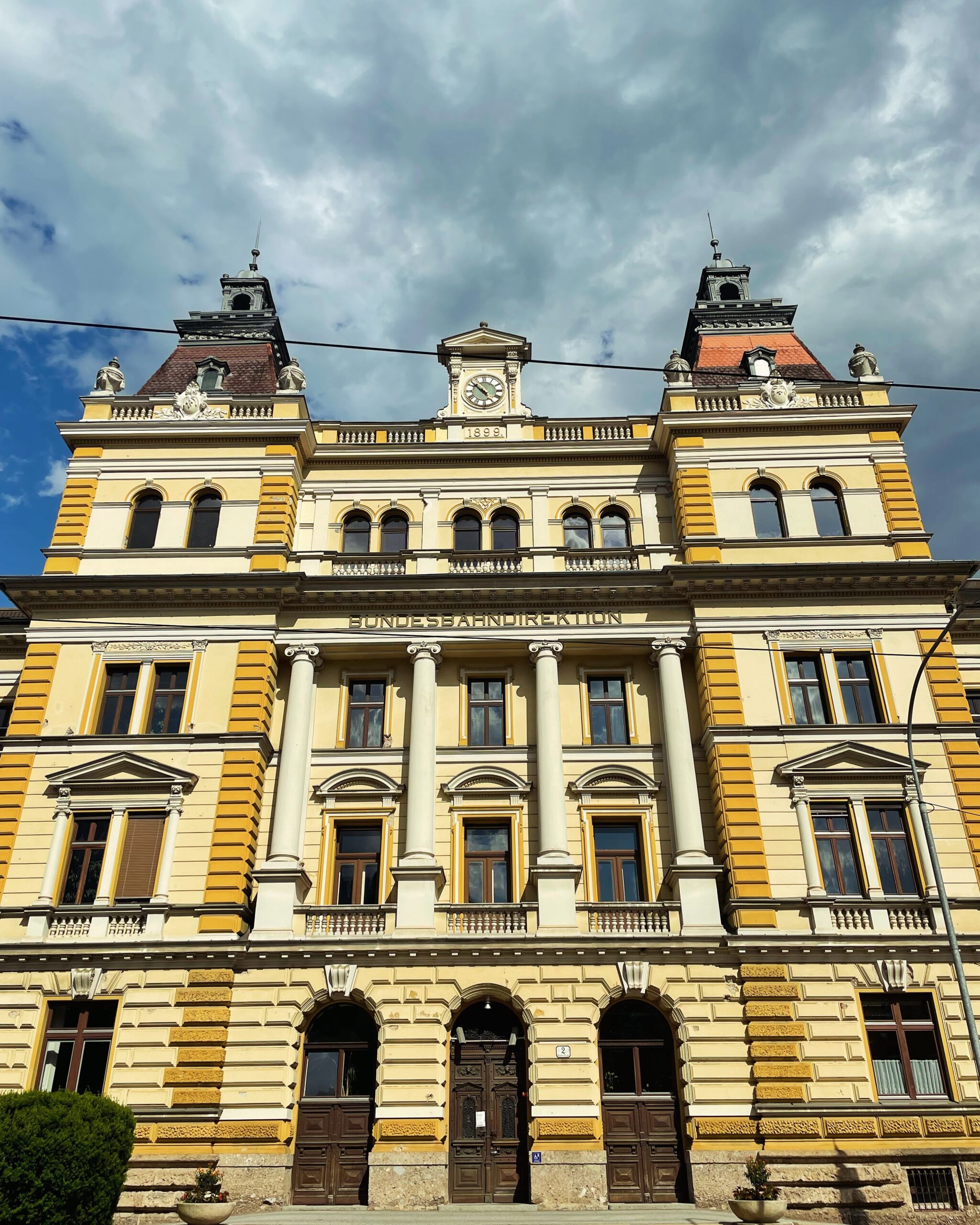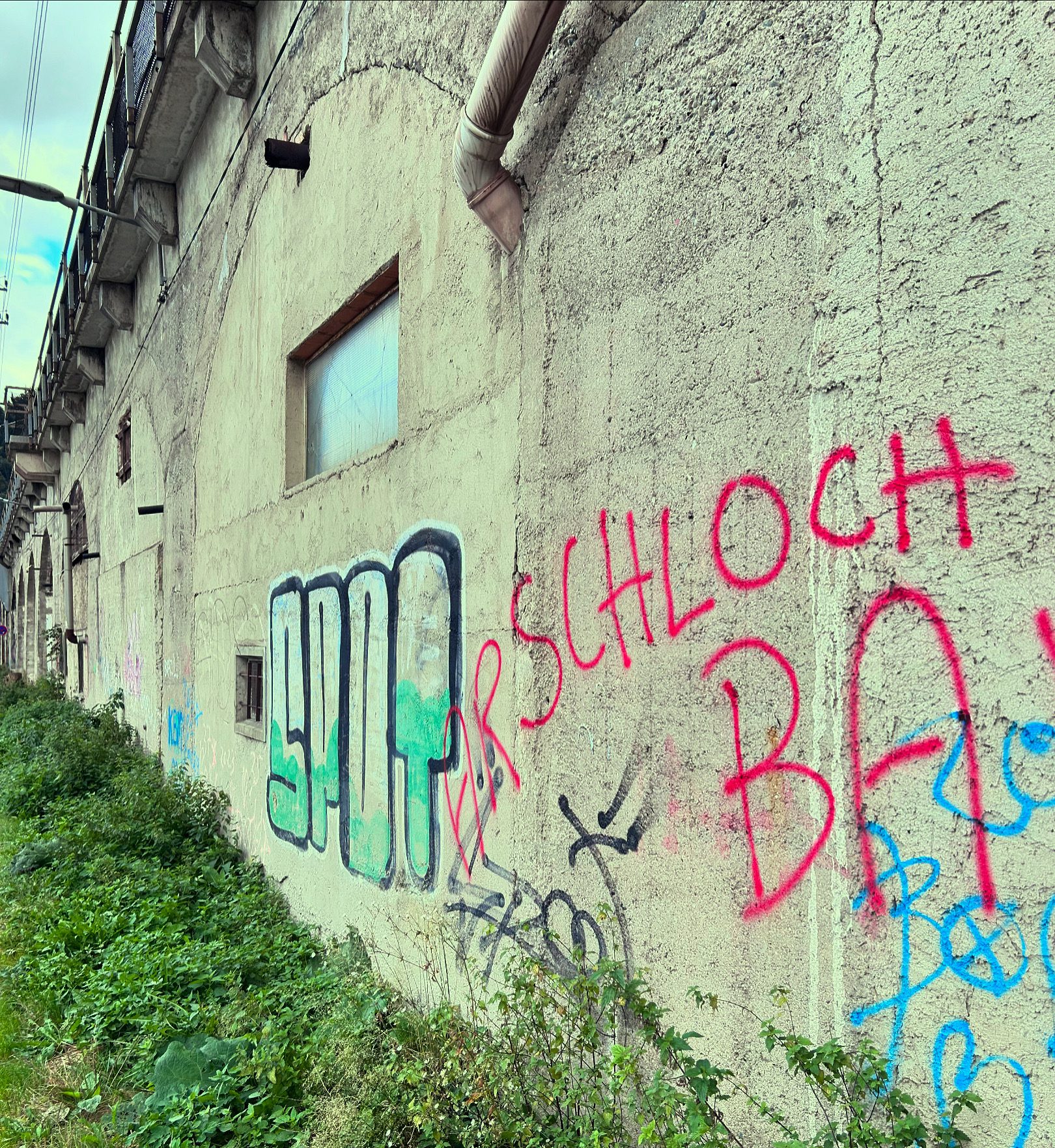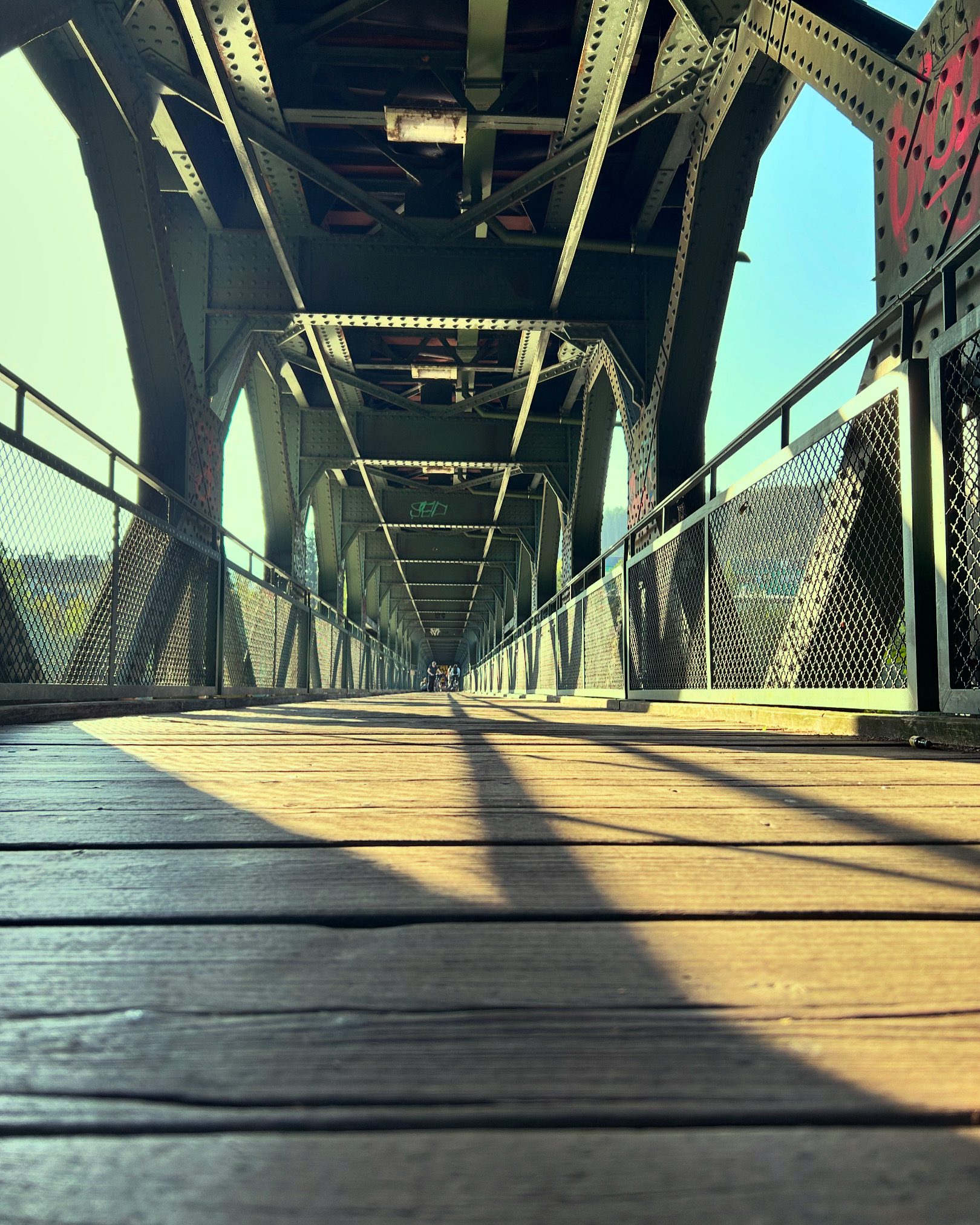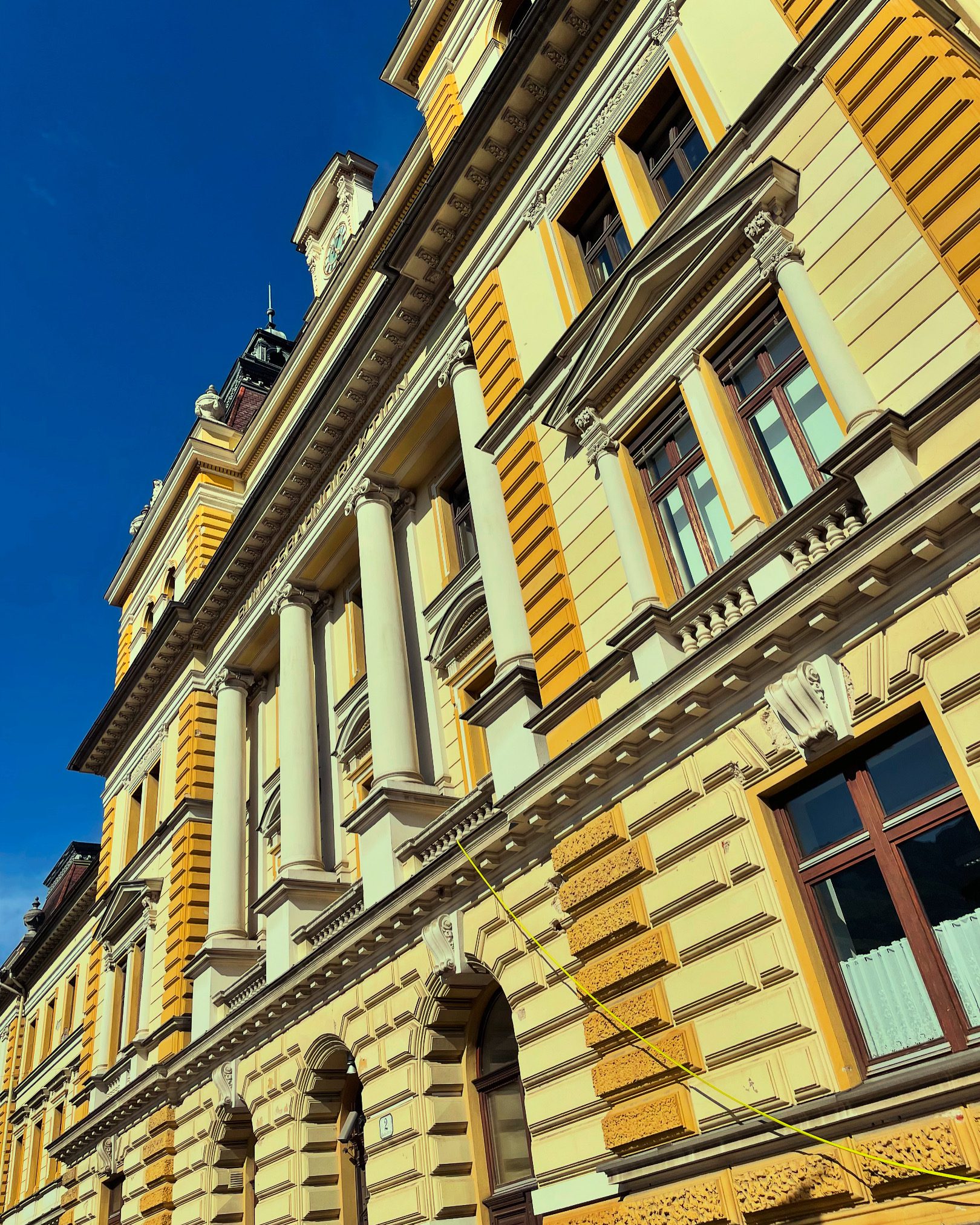Die Eisenbahn als Entwicklungshelfer Innsbrucks
Die Eisenbahn als Entwicklungshelfer Innsbrucks
In 1830, the world's first railway line was opened between Liverpool and Manchester. Just a few decades later, the Tyrol, which had been somewhat remote from the main trade routes and economically underdeveloped for some time, was also connected to the world with spectacular railway constructions across the Alps. While travelling had previously been expensive, long and arduous journeys in carriages, on horseback or on foot, the ever-expanding railway network meant unprecedented comfort and speed.
It was Innsbruck's mayor Joseph Valentin Maurer (1797 - 1843) who recognised the importance of the railway as an opportunity for the Alpine region. In 1836, he advocated the construction of a railway line in order to make the beautiful but hard-to-reach region accessible to the widest possible, wealthy public. The first practical pioneer of railway transport in Tyrol was Alois von Negrelli (1799 - 1858), who also played a key role in the Suez Canal project of the century. At the end of the 1830s, when the first railway lines of the Danube Monarchy went into operation in the east of the empire, he drew up a "Expert opinion on the railway from Innsbruck via Kufstein to the royal Bavarian border at the Otto Chapel near Kiefersfelden“ vorgelegt. Negrelli hatte in jungen Jahren in der k.k. Baudirektion Innsbruck service, so he knew the city very well. His report already contained sketches and a list of costs. He had suggested the Triumphpforte and the Hofgarten as a site for the main railway station. In a letter, he commented on the railway line through his former home town with these words:
"...I also hear with the deepest sympathy that the railway from Innsbruck to Kufstein is being taken seriously, as the Laage is very suitable for this and the area along the Inn is so rich in natural products and so populated that I cannot doubt its success, nor will I fail to take an active part in it myself and through my business friends when it comes to the purchase of shares. You have no idea of the new life that such an endeavour will awaken in the other side..."
Friedrich List, known as the father of the German railway, put forward the plan for a rail link from the Hanseatic cities of northern Germany via Tyrol to the Italian Adriatic. On the Austrian side, Carl Ritter von Ghega (1802 - 1860) inherited overall responsibility for the railway project within the giant Habsburg empire from Negrelli, who died young. In 1851, Austria and Bavaria signed an agreement to build a railway line to the Tyrolean capital. Construction began in May 1855. It was the largest construction site Innsbruck had ever seen. Not only was the railway station built, but the railway viaducts out of the city to the north-east also had to be constructed.
On 24 November 1858, the railway line between Innsbruck and Kufstein and on to Munich via Rosenheim went into operation. The line was ahead of its time. Unlike the rest of the railway, which was not privatised until 1860, the line opened as a private railway, operated by the previously founded Imperial and Royal Privileged Southern State, Lombard, Venetian and Central Italian Railway Company. This move meant that the costly railway construction could be excluded from Austria's already tight state budget. The first step was taken with this opening towards the eastern parts of the monarchy, especially to Munich. Goods and travellers could now be transported quickly and conveniently from Bavaria to the Alps and back. In South Tyrol, the first trains rolled over the tracks between Verona and Trento in the spring of 1859.
However, the north-south corridor was still unfinished. The first serious considerations regarding the Brenner railway were made in 1847. In 1854, the disputes south of the Brenner Pass and the commercial necessity of connecting the two parts of the country prompted the Permanent Central Fortification Commission on the plan. The loss of Lombardy after the war with France and Sardinia-Piedmont in 1859 delayed the project in northern Italy, which had become politically unstable. From the Imperial and Royal Privileged Southern State, Lombard, Venetian and Central Italian Railway Company 1860 had to Imperial and Royal Privileged Southern Railway Company to start with the detailed planning. In the following year, the mastermind behind this outstanding infrastructural achievement of the time, engineer Carl von Etzel (1812 - 1865), began to survey the site and draw up concrete plans for the layout of the railway. The planner was instructed by the private company's investors to be as economical as possible and to manage without large viaducts and bridges. Contrary to earlier considerations by Carl Ritter von Ghega to cushion the gradient up to the pass at 1370 metres above sea level by starting the line in Hall, Etzel drew up the plan, which included Innsbruck, together with his construction manager Achilles Thommen and chose the Sill Gorge as the best route. This not only saved seven kilometres of track and a lot of money, but also secured Innsbruck's important status as a transport hub. The alpine terrain, mudslides, snowstorms and floods were major challenges during construction. River courses had to be relocated, rocks blasted, earthworks dug and walls built to cope with the alpine route. The worst problems, however, were caused by the war that broke out in Italy in 1866. Patriotic German-speaking workers in particular refused to work with the "enemy". 14,000 Italian-speaking workers had to be dismissed before work could continue. Despite this, the W's highest regular railway line with its 22 tunnels blasted out of the rock was completed in a remarkably short construction time. It is not known how many men lost their lives working on the Brenner railway.
The opening was remarkably unspectacular. Many people were not sure whether they liked the technical innovation or not. Economic sectors such as lorry transport and the post stations along the Brenner line were doomed, as the death of the rafting industry after the opening of the railway line to the lowlands had shown. Even during the construction work, there were protests from farmers who feared for their profits due to the threat of importing agricultural goods. Just as the construction of the railway line had previously been influenced by world politics, a celebration was held. Austria was in national mourning due to the execution of the former Emperor Maximilian of Mexico, the brother of Franz Josef I, before a revolutionary court martial. A grand state ceremony worthy of the project was dispensed with. Instead of a priestly consecration and festive christening, the Southern Railway Company donated 6,000 guilders to the poor relief fund. Also in the Innsbrucker Nachrichten there is not a word about the revolution in transport, apart from the announcement of the last express train over the Brenner Pass and the publication of the timetable for the Southern Railway.
(The last express coach). Yesterday evening at half past seven the last express coach to South Tyrol departed from here. The oldest postilion in Innsbruck was driving the horses, his hat was fluttered with mourning, and the carriage was decorated with branches of weeping willows for the last journey. Two marksmen travelling to Matrei were the only passengers to pay their last respects to the express coach. In the last days of 1797, the beautiful, otherwise so lively and now deserted road was conspicuously dead.
Until the opening of the railway line over the Brenner Pass on 24 August 1867, Innsbruck was a terminus station of regional importance. The new, spectacular Brenner railway across the Alps connected the northern and southern parts of the country as well as Germany and Italy. The Alps had lost their divisive character and their terror for transit, at least a little. The second obstacle that had to be overcome to unify the country was the Arlberg. The first plans for a railway line that would connect the region around Lake Constance with the rest of the Danube Monarchy were made as early as 1847, but the project was repeatedly postponed. In 1871, food export bans due to the Franco-Prussian War led to a famine in Vorarlberg because food could not be delivered quickly enough from the east of the vast empire to the far west. Nevertheless, the economic crisis of 1873 delayed construction once again. It was not until seven years later that the decision was made in parliament to realise the railway line. In the same year, the complicated construction work began to the east and west of the Arlberg massif. 38 torrents and 54 avalanche danger points had to be built with 3100 structures in precarious weather conditions in the alpine terrain. The most remarkable achievement was the ten kilometre long tunnel, which carries two tracks.
On 30 June 1883, the last postal transport travelled from Innsbruck to Landeck by horse-drawn carriage in ceremonial mourning. The following day, the railway took over this service. With the opening of the railway from Innsbruck to Landeck and the final completion of the Arlberg railway to Bludenz in 1884, including the tunnel through the Arlberg, Innsbruck had once again become a transport hub between Germany and Italy, France, Switzerland and Vienna. In 1904, the Stubai Valley railway was opened, followed by the Mittenwald railway in 1912. Both projects were planned by Josef Riehl (1842 - 1917).
The railway was the most directly noticeable feature of progress for a large part of the population. The railway viaducts, built from Höttinger Breccie from the nearby quarry, put a physical and visible end to the town in the east towards Pradl. But the railway did not just change the country from a purely technical perspective. It also brought immense social change. The railway stations along the line revitalised the towns immensely. The station forecourt in Innsbruck became one of the new centres of the city. Workers, students, soldiers and tourists flocked to the city in large numbers, bringing with them new lifestyles and ideas. However, not everyone was happy with this development. Shipping on the Inn, until then an important transport route, came to an almost immediate standstill. The small aristocracy, which had already been severely plucked after 1848, and particularly strict clerics feared the collapse of local agriculture and the final decline in morals caused by the foreigners in the city.
By 1870, Innsbruck's population had risen from 12,000 to 17,000, mainly due to the economic stimulus provided by the railway. Local producers benefited from the opportunity to import and export goods cheaply and quickly. The labour market changed. Before the railway lines opened, 9 out of 10 Tyroleans worked in agriculture. With the opening of the Brenner railway, this figure fell to less than 70%.
The railway was worth its weight in gold for tourism. It was now possible to reach the remote and exotic mountain world of the Tyrolean Alps. Health resorts such as Igls and entire valleys such as the Stubaital, as well as Innsbruck city transport, benefited from the development of the railway. 1904 years later, the Stubai Valley Railway was the first Austrian railway with alternating current to connect the side valley with the capital. On 24 December 1904, 780,000 crowns, the equivalent of around 6 million euros, were subscribed as capital stock for tram line 1. In the summer of the following year, the line connected the new districts of Pradl and Wilten with Saggen and the city centre. Three years later, Line 3 opened the next inner-city public transport connection, which only ran to the remote village in 1942 after Amras was connected to Innsbruck.
The new means of transport contributed to the democratisation and bourgeoisification of society. Not only for wealthy tourists, but also for subjects who did not belong to the upper class, the railway made excursions into the surrounding area possible. New foods changed people's diet. The first department stores emerged with the appearance of consumer goods that were previously unavailable. The appearance of the people of Innsbruck changed with new, fashionable clothing, which became affordable for many for the first time. The transport of goods on the Inn received its final death blow. In the 1870s, the city's last raft unloading site, where Waltherpark in St. Nikolaus is located today, was closed.
The Die Bundesbahndirektion der K.u.K. General-Direction der österreichischen Staatsbahnen in Innsbruck was one of only three directorates in Cisleithania. New social classes were created by the railway as an employer. People from all walks of life were needed to keep the railway running. Workers and craftsmen were able to climb the social ladder at the railway, similar to the state administration or the military. New professions such as railway attendant, conductor, stoker or engine driver emerged. Working for the railway brought with it a certain prestige. Not only were you part of the most modern industry of the time, the titles and uniforms turned employees and workers into respected figures.
The railway was also of great importance to the military. As early as 1866, at the Battle of Königgrätz between Austria and Prussia, it was clear how important troop transport would be in the future. Until 1918, Austria was a huge empire that stretched from Vorarlberg and Tyrol in the south-west to Galicia, an area in what is now Poland, and Ukraine in the east. The Brenner Railway was needed to reinforce the turbulent southern border with its new neighbour, the Kingdom of Italy. Tyrolean soldiers were also deployed in Galicia during the first years of the First World War until Italy declared war on Austria. When the front line was opened up in South Tyrol, the railway was important for moving troops quickly from the east of the empire to the southern front.
Carl von Etzel, who did not live to see the opening of the Brenner railway, is commemorated today by Ing.-Etzel-Straße in Saggen along the railway viaducts. Josef Riehl is commemorated by Dr.-Ing.-Riehl-Straße in Wilten near the Westbahnhof railway station. There is also a street dedicated to Achilles Thommen. As a walker or cyclist, you can cross the Karwendel Bridge in the Höttinger Au one floor below the Karwendel railway and admire the steel framework. You can get a good impression of the golden age of the railway by visiting the ÖBB administration building in Saggen or the listed Westbahnhof railway station in Wilten. In the viaduct arches in Saggen, you can enjoy Innsbruck's nightlife in one of the many pubs covered by history.
Influence of the railway on agriculture
Published: Neue Tiroler Stimmen / 11 February 1868
It is an undeniable fact that the Tyrolean is characterised to a high degree by a practical sense for everything he tackles and an eagerness to work. Tyroleans excelled in all fields of science, art and industry, just as many have achieved a good career and a respectable position abroad thanks to their entrepreneurial spirit and proficient business skills. The craftsmen from Tyrol, who go abroad in droves to find work, are also valued and well paid everywhere. But there is one peculiarity that characterises the Tyrolean above all others, and which hardly anywhere else achieves such validity and significance as with him, and that is - his striving for independence in his own homeland. The vast majority of emigrants are drawn back to the mountains. Once the Tyrolean labourer has acquired a small capital with toil and sweat, even if it is only a few hundred guilders, he uses it to buy a "Heimatl" or at least a field. The most remarkable thing about this, however, is that he only cultivates his land out of air and love of labour - a fact that is easy to prove.
For example, let us take a field in the neighbourhood of Innsbruck, where 1 acre in the better locations costs 1500 fl. including court costs. Of this, the (only 5%) interest amounts to 75 fl., plus 8 double loads of fertiliser placed on the field in Türkenfeld at 48 fl. Harrowing and building together with sowing 10 fl., "basin", "heaping" 8 fl., removal, insertion, removal and "removal" 12 fl., and 8 fl. for the stoning, this results in a total of 161 fl. as expenditure. If one now calculates an average of 60 rows of Turks at 2 fl. each, straw and cobs 20 fl., the income amounts to 140 fl. - The owner therefore works such a field for free and because he is not forced to do so, there is no other explanation left than that he does it for pleasure.
However, most of the work is done on the side - as they say - "one does not count one's own labour" and yet gets something in the house, which is more and more common for workers who are often without employment in winter, such as bricklayers, carpenters, etc., of greater or lesser extent in recent times. of greater or lesser extent have become more and more common in recent times, and such an owner, who on top of that often owns barely half of the purchase capital of his "arable land" himself and owes the rest on it, will, if not ruined, at least be severely affected for many years to come. As long as grain remains at the current price, it will be possible to get by through hard labour and hardship, but what if grain prices fall? What if the Pustertal railway shortens the distance that Hungarian grain has to travel to reach us by almost half? What if, in Hungary itself, branch lines and good roads make it easier to deliver the grain to the stations (which has cost the most so far) and the railway authorities themselves finally realise that by reducing the fare they are not only promoting general prosperity but also their own? If, for example, wheat is bought in Hungary for 2 fl. and the freight is also 2 fl. What effect will this have on our own products, on our entire soil culture?
It is high time that farmers took this question seriously. For if the further expansion of the railway network in the east (including the countries bordering on Hungary) makes it possible for us to buy a hectare of wheat for only 2 1/2 fl., the price of the fruit mostly grown here by the Turks will be reduced by half, and the present enormous value of the fields themselves will naturally be diminished as a result. The importance of the question is obvious and deserves our attention to the highest degree. It is true that the railway is of immense benefit to our country because we have to obtain 1/3 of our needs from outside, which is why it is obvious that our total wealth must increase if we can obtain this additional demand more cheaply than is possible through are and can seek further sales sources for our own export articles. Nevertheless, the completion of the railway network will have to bring about some far-reaching changes in our agricultural conditions in order to offset the individual detrimental consequences as far as possible through more modern utilisation of the land. First and foremost, this may well involve increasing livestock farming and consequently better cultivation of fodder herbs and especially the Alps.
Sights to see...
Tram line 6
Stops: Mühlau - Igls
Viaduct arches
Ing.-Etzel-Straße
Palais Ferrari & Old Garrison Hospital
Weinhartstrasse 2 - 4
Karwendel bridge
Karwendel arches
Turnus clubhouse
Innstraße 2
ÖBB Verwaltungsgebäude
Claudiastrasse 2
